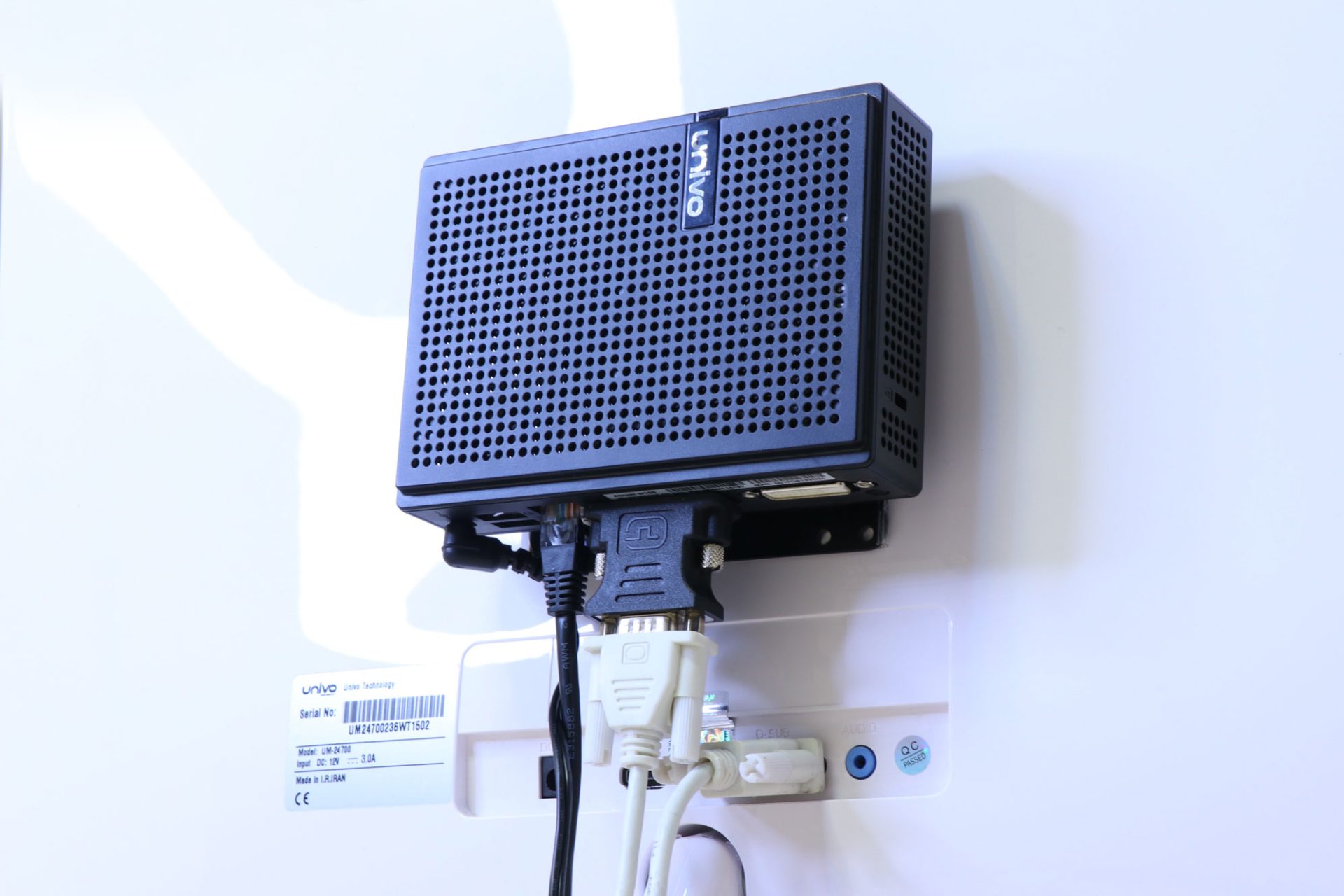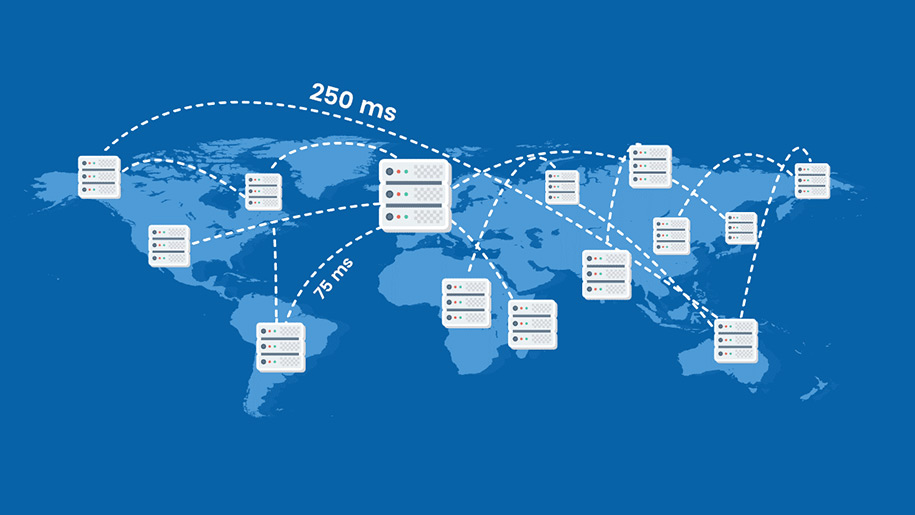The Impact of Network Latency on Small Businesses
Have you ever experienced that your business website is very slow? Or when you upload a document to email, it takes so long that you think there is a problem with the internet? Maybe you were in a hurry to get customer ticket information in your company’s CRM system, but you couldn’t access it due to network latency. It is even possible that you were having an Internet conversation with the customer at the same time and the audio was transmitted with a delay.
As you can see, Network Latency has a great impact on small and even large businesses, and improving it can solve many problems. But what is Network Latency? Why is it important and how will improving it affect your business?
What is Network Latency?
Network latency, sometimes called latency, is a term used to describe the delay in communication over a network. Network latency is simply the amount of time it takes for a packet of data to be captured, transmitted, processed through multiple devices, then received and decoded at the destination.
When the transmission delay in a network is low, it is called a “low-latency network” or “low-latency network”, and conversely, networks that have a high delay are called “high-latency networks”.
Network Latency, when high, creates bottlenecks in communication. This is like traffic on a four-lane highway where all cars try to merge into one lane. High latency reduces communication bandwidth and can be temporary or permanent depending on the source of the latency.
Network latency is measured in milliseconds, which is called ping rate in speed tests. The lower the ping rate, the better the network performance. A ping rate of less than 100ms is acceptable, but for optimal performance, a latency in the 30-40ms range is desirable. Obviously, zero latency is what we all want. However, it may be less achievable.
How can delays affect your business?
To put it very briefly, Network Latency affects the speed of the Internet and that is what affects your small business. High latency can negatively impact everything from loading a web page, uploading or downloading an important document, to the overall performance of internal systems. In addition, if a business uses a VoIP phone system, the quality of incoming and outgoing calls is greatly compromised. If this problem is not solved quickly, it can lead to a significant loss of productivity, reputation, and income of your company in the following ways.
Slow things down
Network latency can slow down anything you do online, such as loading a web page or uploading and downloading important documents or information.
Loss of productivity
Simple tasks that take no time at all take a lot longer due to the amount of time it takes to load the internet. The time spent in this situation can be useful time that is used elsewhere.
Reputational risk
A company may have high customer wait times just because their site takes a long time to load. Therefore, customers choose competitors who can do their work faster. And that means jeopardizing the reputation of that business.
Loss of income:
Obviously, lost productivity and lost customers lead to lost revenue.
Causes of network delay
Four main reasons can affect network latency. These are as follows:
Transmission media: Transmission media such as WAN or fiber optic cables have limitations and can affect latency due to their nature.
Propagation: It is the time it takes for a packet to move from one source to another (at the speed of light).
Routers: Routers need time to analyze a packet’s information and, in some cases, additional information. Each hop that a packet makes from one router to another router increases the network latency.
Storage: Storage delays may occur when a packet is stored or retrieved. This delay is caused by intermediate devices such as switches and bridges.

How to Reduce Network Latency?
There are some solutions to improve network latency, such as moving closer to the router, closing additional programs and software, and restarting the router. However, if you have a small business and want to solve the problem, it is better to use XeroClient.
Using Univo XeroClient to improve network latency.
Zero Client, also known as ultrathin client, is a server-based computing model where the end-user computing device has no local memory. While a thin client usually has its own operating system and stores configuration settings in the device’s memory.
A zero client is usually a small box that serves to connect a keyboard, mouse, and monitor to a remote server. This server, which hosts the operating system (OS) and client software applications, can be accessed wirelessly or by cable. In other words, this small device acts like a computer. with the difference that it does not have hardware. XeroClient connects the user’s desktop to a server that hosts the operating system and applications. In this way, a person can connect to a server and perform his daily activities without having visible hardware at work.
Considering that a major part of Network Latency is due to problems on the user’s side, using Xeroclient can solve this problem by connecting the user to a strong server with high memory and speed.
Xero clients are basically input/output (I/O) redirection units. All user input (mouse clicks, keystrokes, etc.) is sent to a remote server, which returns the data for display on the user’s monitor. Almost all processing is done on the server side and almost zero processing is done on the client side and that is why it is called zero client or zero client.
Why is XeroClient right for your business?
In recent years, many start-up businesses have avoided allocating a full computer (Fat client) to their employees to reduce costs and increase speed and reduce network latency. Rather, they are connected to the Virtual Desktop using a minimal computer system (Zero Client), which is actually the user’s virtual desktop on another server. This helps all users connect to a virtual server with good features and high speed without paying a lot of money to buy hardware with a lot of memory and CPU for each user. With this, problems on the user’s side no longer cause Network Latency and all users can benefit from the facilities of a server with high bandwidth and speed.
Contact us to buy and use Univo XeroClient to improve network latency.
Conclusion
Network latency can cause a lot of problems for your business, and improving it has a big impact on small businesses. In this article, we discussed the problems of network delay and examined the effects of its improvement in small and large businesses so that IT managers, organizations, etc. can benefit from it to improve the overall performance of their organization.













